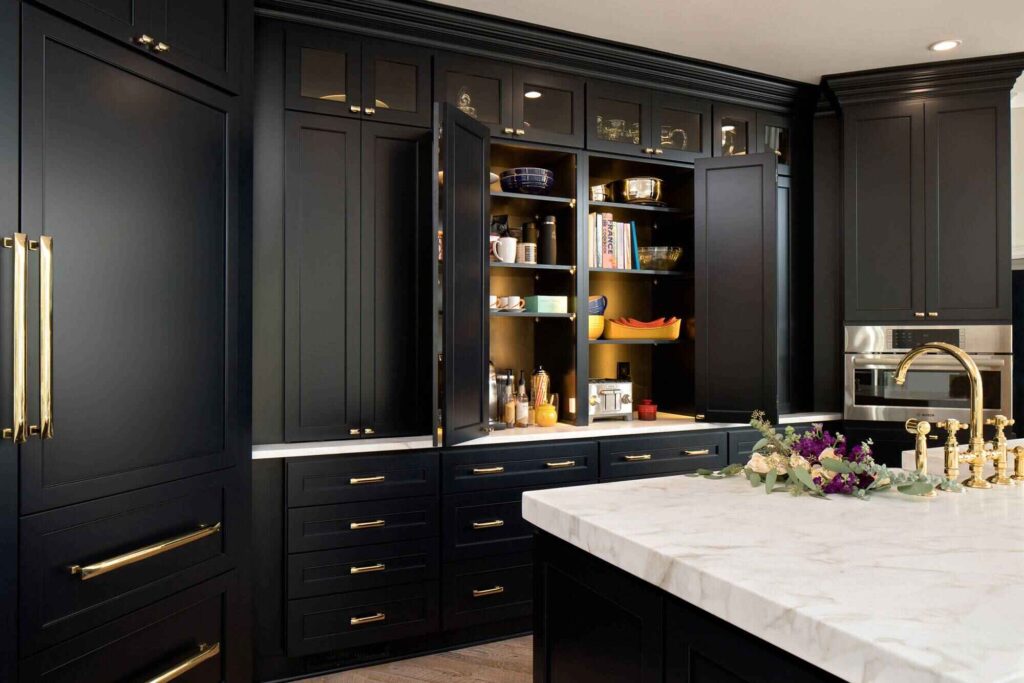When it comes to remodeling or building a new kitchen, choosing the right materials can significantly impact the aesthetics, functionality, and value of your home. Among the many options available, granite countertops remain one of the most popular choices due to their durability, elegance, and timeless appeal. In this guide, we’ll dive deep into everything homeowners need to know about kitchen granite installation, including the granite installation process, benefits, and how it ties into your overall kitchen installation project.
Why Granite is the Gold Standard for Kitchen Countertops
Granite is a natural stone that forms over millions of years beneath the Earth’s surface. Each slab is unique in pattern and color, which gives every kitchen a one-of-a-kind appearance. Here are a few key reasons why homeowners choose granite for their kitchen installations:
-
Durability: Granite is one of the hardest natural materials. It’s resistant to scratches, heat, and stains (when properly sealed).
-
Aesthetic Appeal: With hundreds of patterns and color combinations, granite suits almost any kitchen design, from traditional to modern.
-
Home Value: Granite countertops are a high-end feature that adds resale value and appeals to potential buyers.
-
Low Maintenance: Once sealed, granite countertops require minimal upkeep.
Step-by-Step Granite Installation Process
Understanding the granite installation process can help you plan your kitchen remodel more effectively. Here’s what you can expect:
1. Planning and Measuring
The process begins with a professional consultation. During this stage, installers will:
-
Take precise measurements of your kitchen space.
-
Discuss design preferences, edge profiles, and backsplash options.
-
Help you select the right granite slab based on your kitchen layout.
2. Templating
A template is created using your kitchen’s exact dimensions. This step ensures the granite countertops fit perfectly around sinks, stovetops, and cabinets.
3. Granite Selection and Fabrication
Once the template is ready, fabricators cut and shape the granite slab to your specifications. This includes:
-
Cutting holes for sinks and cooktops.
-
Shaping the edges.
-
Polishing the surface for a smooth, finished look.
4. Removing Old Countertops (If Applicable)
If you’re remodeling an existing kitchen, the old countertops are removed. This must be done carefully to avoid damaging the cabinetry underneath.
5. Kitchen Granite Installation
The granite slabs are transported and installed by a professional team. They are carefully set in place, leveled, and secured. Seams, if any, are sealed using a color-matched epoxy.
6. Sealing and Finishing
Granite is a porous material, so sealing it is essential to prevent stains and water damage. The final step is applying a high-quality sealant and conducting a thorough inspection.
What to Consider Before Your Kitchen Installation Begins
Your kitchen installation project is more than just choosing beautiful materials. Here are essential factors to consider when including granite installation as part of your kitchen remodel:
Layout and Flow
Before installing granite countertops, ensure that your kitchen layout supports a smooth workflow. Consider the “kitchen triangle” concept (sink, refrigerator, and stove placement) for optimal efficiency.
Cabinet Strength
Granite is extremely heavy, so your cabinets must be strong enough to support its weight. Reinforcements may be needed if you’re upgrading from lighter materials like laminate or tile.
Budget Planning
Granite installation costs vary based on slab quality, size, and complexity. Typical prices range from $40 to $100 per square foot, including fabrication and installation.
Style Matching
Choose granite colors and patterns that complement your kitchen cabinets, flooring, and backsplash. Dark granite pairs well with lighter cabinetry, while light granite brightens up darker kitchens.
Benefits of Hiring a Professional for Granite and Kitchen Installation
DIY installation might seem tempting, but it’s not recommended for granite countertops due to the material’s weight, fragility, and need for precision. Here’s why hiring professionals is crucial:
-
Expert Precision: Accurate measurement and cutting require specialized tools and experience.
-
Safety: Handling granite slabs incorrectly can lead to injuries or damage.
-
Warranty: Most professional installers offer warranties on both labor and materials.
-
Time Savings: Professionals can complete the job more quickly and efficiently.
Maintaining Your Granite Countertops Post-Installation
Once your kitchen granite installation is complete, proper maintenance ensures the longevity and beauty of your new countertops:
-
Clean with a soft cloth and mild detergent.
-
Avoid acidic or abrasive cleaners that can degrade the sealant.
-
Reseal the surface every 1–2 years (frequency may vary depending on usage).
-
Use cutting boards and trivets to preserve the finish and prevent damage.
Final Thoughts
Investing in granite installation as part of your kitchen installation is a decision that pays off in beauty, functionality, and resale value. Whether you’re remodeling your current kitchen or building a new one from scratch, granite countertops provide a lasting upgrade that combines luxury with practicality.
By working with experienced professionals and choosing the right granite slab to suit your space, you can transform your kitchen into a stylish, efficient, and inviting space for years to come.
- The Complete Guide to Kitchen Granite Installation: What Homeowners Need to Know About Granite and Kitchen Installations
- When it comes to remodeling or building a new kitchen, choosing the right materials can significantly impact the aesthetics, functionality, and value of your home.
- kitchen granite installation, granite installation, kitchen installation
Related posts:
 The Complete Guide to Selecting the Best Italian Marble to Install in Your Home or Office
The Complete Guide to Selecting the Best Italian Marble to Install in Your Home or Office
 How to Choose the Perfect Soft Mattress Topper That Suits Your Comfort
How to Choose the Perfect Soft Mattress Topper That Suits Your Comfort
 The Hidden Power of Two Face Tape in Next-Gen Packaging Solutions
The Hidden Power of Two Face Tape in Next-Gen Packaging Solutions
 Confidential & Convenient: Get an STD Test at Home with Doctor on Call in Dubai
Confidential & Convenient: Get an STD Test at Home with Doctor on Call in Dubai
 Key Steps in Kitchen Installation Poole | Complete Guide 2025
Key Steps in Kitchen Installation Poole | Complete Guide 2025
 “How to Plan a Successful, Stylish, and Budget-Friendly Interior Renovation”
“How to Plan a Successful, Stylish, and Budget-Friendly Interior Renovation”
 How to Plan a Successful Poultry Farm Construction Project Easily
How to Plan a Successful Poultry Farm Construction Project Easily
 Struggling with Flat Pillows? Discover the Lasting Fluff of Down Feather Options
Struggling with Flat Pillows? Discover the Lasting Fluff of Down Feather Options





